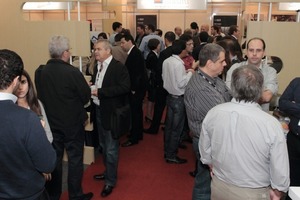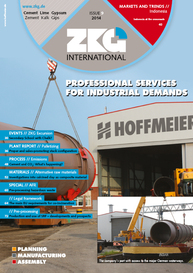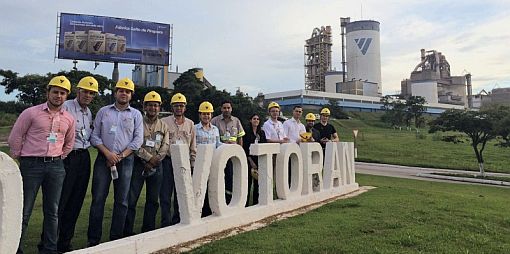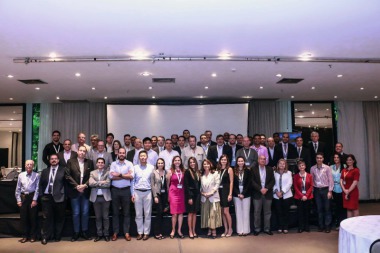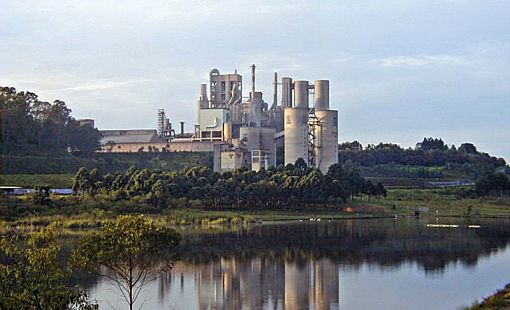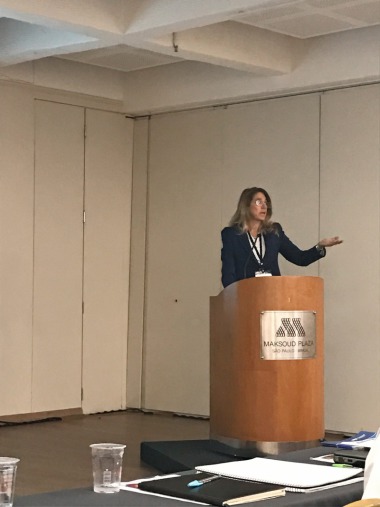Reunião Brasileira
After 15 years, the Brazilian Cement Congress reunited more than 300 professionals and experts from Brazil and other countries, such as China, Germany, United States, India, Guatemala, Argentina, Belgium and Switzerland. Attendees from the cement industry, its suppliers, and national and international researchers were present at the event held May 19th to 21st in São Paulo/Brazil.
The event encompassed three days of intense technical discussions, exchange of experiences, networking, and exhibited showcasing technologies and trends for the Brazilian cement industry. The result was a technological event with a very high quality content.
Among the highlights of the event was a lecture by Philippe Fonta, Director of the Initiative Program Cement Sustainability, World Business Council for Sustainable Development (CSI/WBCSD). Fonta addressed the challenges to the sustainability of the global cement industry, drawing attention to how climate impacts can be managed, and how the operational safety of employees can be improved. He reasoned that concrete is a considerable and sustainable building material and pointed to the use of water as well as the impact of quarrying on biodiversity. Philippe Fonta has shown that in addressing these issues, cement, concrete and its products will be the key to the economical and sustainable development of a society constantly expanding and rapidly changing. “Concrete is currently consumed by mankind in an amount twice as much as all other building materials together”, he said.
Vagner Maringolo, Manager of Environment and Resources for the European Cement Association (Cembureau), emphasized how the concept of resource efficiency in the cement industry can be maximized, or how to produce more with less material within the limits of our planet. The strategy presented by Cembureau shows the optimized use of resources throughout the construction chain, from exploration to reuse and recycling of products based on cement.
Martin Schneider, CEO of the German Cement Association (VDZ), spoke about industry innovations in new technologies. He emphasized the techniques of carbon capture, storing (CCS) and primarily the use of carbon as a solution for the future of the industry in CO2 mitigation, as well as new cements, for which he was assisted by John Vanderlay, Associate Professor at the PolytechnicSchool of the University of São Paulo (USP). The lecturer introduced the concept of low clinker content and therewith low CO2 emissions as the future of cement.
The speech given by Luis Carlos Busato, Managing Partner of Signus Vitae Smart Environmental Projects, provided a new look at sustainability focusing on exhaustible natural resources that must be in harmony with constant activity, the impacts of the cement industry, and the challenge of producing cement in a sustainable manner.
Cary O. Cohrs, Chairman of the Board of Directors of the North American Cement Association (PCA), presented the concept of resilience as applied to concrete, i.e. the ability of concrete to adapt to change and recover quickly. For example, he showed how housings made from concrete were the most resilient compared to other building systems, after being subjected to natural disasters in the United States and how these examples are being inserted into the preparation of building codes, regulations and legislation.
In times of awareness of power saving, many exhibitors presented energy efficient solutions for all stages of the cement manufacturing process. Schneider Electric, for example, highlighted the new model of power generation from the use of hot kiln gas. The lecture was presented by Rosy Wang, Director of Global Solutions for Cement.
The last day of the event was marked with contributions from representatives of the cement industry. The lecture by Edvaldo Arajo Rabello, Director of Votorantim Cement, addressed the growth in sustainability and the commitment of the company to support social activities as well as for environmental protection for karst areas, caves and remnants of the Atlantic Forest, to name a few.
Daniel Mattos Fuller, Manager of Lafarge Industrial Ecology Brazil, showed that the sustainable indices of the group in Brazil are higher in relation to other members of the Lafarge group and other countries in general.
Francisco José Leme, Global Coordinator of Co-processing of the Intercement Group, presented case studies of co-processing in Portugal addressing challenges and opportunities, inclusive of the laws and policies and comparing it to landfill or incineration. He revealed the possibility of increasing the co-processing of demolition waste (rubble) and urban sewage sludge although they need to be treated first, but emphasized that these residues are underestimated as a potential resource.
The academic lectures and exhibitions also supported the conference by highlighting concepts such as modern technologies for kiln processes, further reduction of the impacts of emissions and pollutants, employment of nanotechnology in the product, as well as the use of safe equipment for application in cement plants.
The conference also presented several articles that were available in the poster session. All presentations will be available on the website of ABCP (//www.cbcimento.com.br" target="_blank" >www.cbcimento.com.br:www.cbcimento.com.br).
According to Renato Giusti, Chairman of ABCP, and President of the Congress, the 6th annual BCC revealed that investments in new plants and new technologies have given Brazil a modern industrial park, positioning the Brazilian cement industry as one of the most technically evolved with a high quality that is suitable for the development of the country. “Our challenge is to manufacture cement with less environmental impact and with this action line the industry already practices the three pillars of sustainability and is considered one of the most eco-efficient in the world”, Renato declared.
After the intense response by providers, experts, and industry representatives, the Communications Director for ABCP, engineer Hugo Rodrigues, promised to plan a reissue of the congress in 2015.Muito obrigada e até a próxima!


